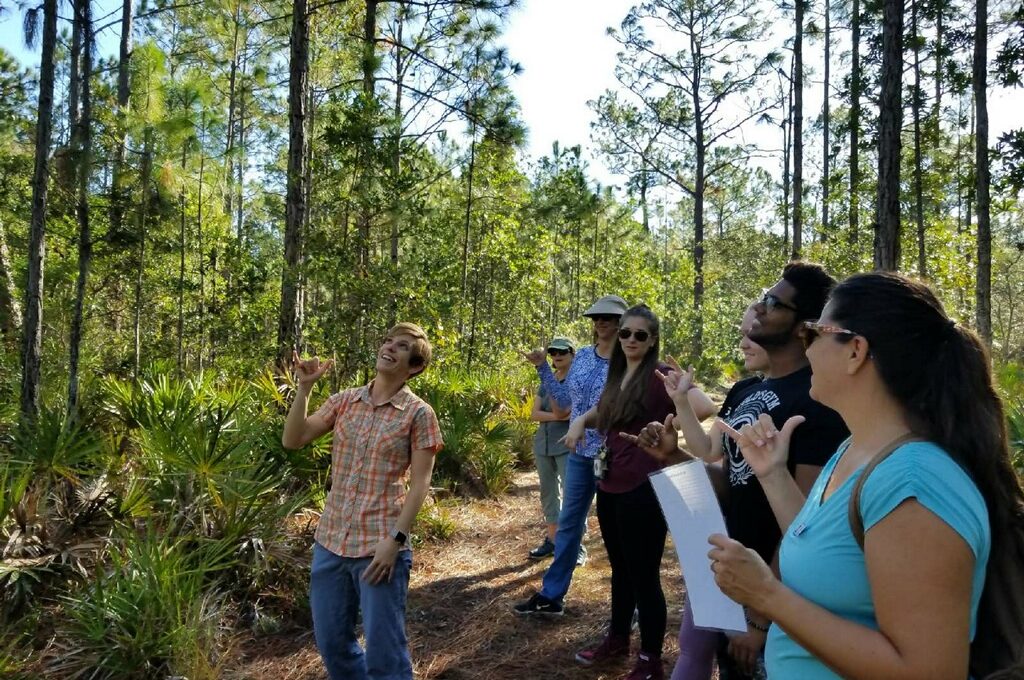It’s known as the wildest place in Pinellas County. It might also be the quietest. It’s one of the few places out of earshot of traffic.
By J. Scott Angle
The Brooker Creek Preserve can change your relationship to the natural world—or create one, if your life is all cars, buildings, parking lots and industry. Its lone public university scientist uses the 8,700 acres and teaching programs throughout the community to inspire people to create a bit of Brooker in their backyards.
That could mean landscaping with native species, shutting off sprinklers, using fewer pesticides or installing rain sensors. And if the preserve and its educators really reach you, they even hope to see you at a beach cleanup, sampling local waters for microplastics or clearing a storm drain of debris to reduce water pollution.
With the support of a team of Pinellas County employees and the county-owned Preserve, the University of Florida’s Lara Milligan has succeeded in doubling the number of people who go from “I’ve driven by that a million times” to “I’ll be back.” She also teaches throughout the community to bring the spirit of Brooker far outside the boundaries of the preserve and across those of the three counties—Pinellas, Hillsborough and Pasco—that meet near the preserve’s northern border.
That spirit is that everyone can play a role in making the region a little wilder, with slightly cleaner water and air, with more vigilance for its critters and to see those animals as neighbors rather than a nuisance. Come to Brooker and you’re guaranteed to see a wild turkey, a coyote or a bobcat, albeit as taxidermy ambassadors in the visitor center. But if you’re lucky you can see a live one on a hike, whether on your own or on one of Milligan’s guided hikes. You’re very likely to see a gopher tortoise and an alligator (as well as, of course, a Gator: Milligan has two conservation degrees from UF).
Milligan is a natural resources agent the for UF Institute of Food and Agricultural Sciences Extension Pinellas County. It’s her publicly funded job to deliver the science of the natural world to the public. Using the century-old extension model that has traditionally helped people preserve or grow food, Milligan brings what we know about how we can protect the environment and translates it so every homeowner, gardener, beachgoer and Pinellas County resident can weave conservation into their habits and habitats.
Her message is that you don’t need to be an expert to make an impact. In fact, she “discovered” Extension only when she applied for her current job. It set her on a course to develop programs like her water steward course, to launch the Naturally Florida podcast and to teach at Brooker and beyond about coyotes, your place in a watershed or why flatwoods, hammocks and forested wetlands matter.
Her leadership as an environmental educator earned her election by her peers as a president of the Association of Natural Resource Extension Professionals as well as recognition as a national Project Learning Tree Educator of the Year.
She’s a valuable resource, just as Brooker is. Please visit her at the preserve, enroll in her courses, volunteer for her beach cleanups or support her call for the establishment of more living shorelines to put nature to work for us protecting our coast.
- Scott Angle is the University of Florida’s Vice President for Agriculture and Natural Resources and leader of the UF Institute of Food and Agricultural Sciences (UF/IFAS).
